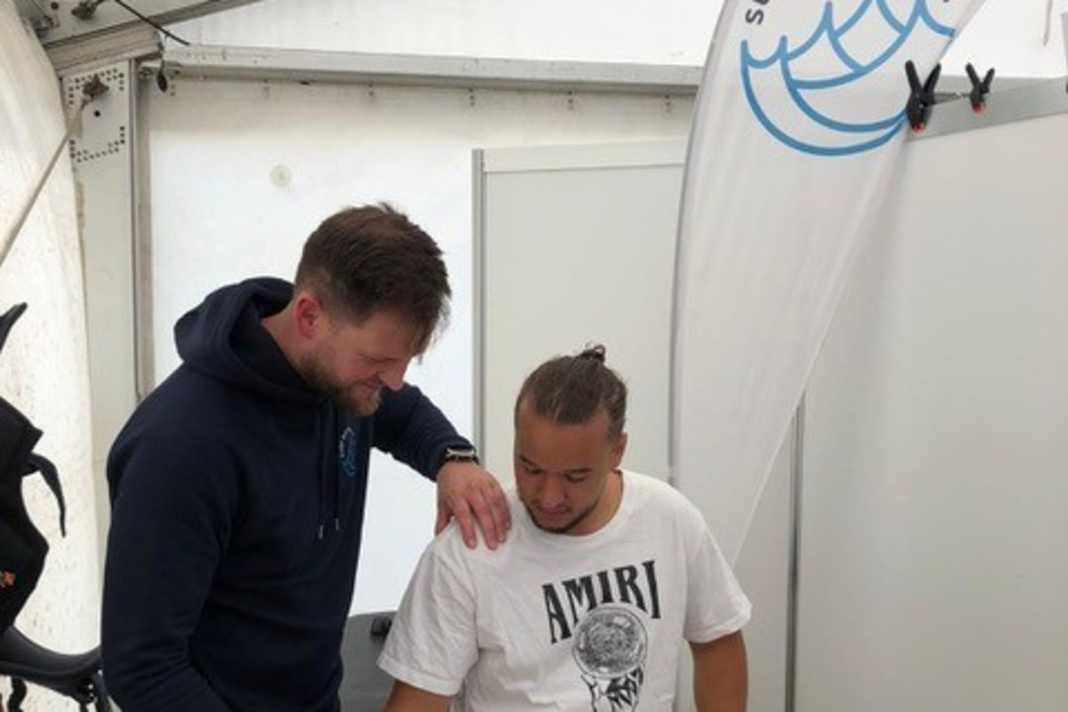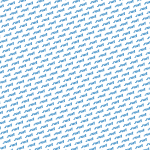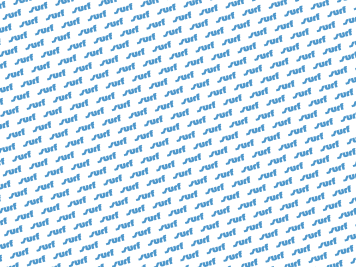They are all active water sports enthusiasts themselves and volunteer as advisors in the event of injuries or complaints - including on the topic of wound care in surf 8/2024. Chairman Dr Thomas Gangl talks about the background and content of the association.
How did you come together as Surfmedizin e.V.?
We are a group of doctor and physiotherapist friends who got to know each other through water sports. We realised a long time ago that, unlike other sports, there wasn't really any proper medical care in our field. We wanted to improve that! In Germany, the most sensible thing to do is to set up an association, then you have legal certainty and also the structure. And so we founded Surfmedizin e.V. three years ago, and we've been growing ever since!
We are sports scientists, sports doctors and sports physiotherapists. The prerequisite is that you have one of these professions and are also an active board sportsman, i.e. windsurfing, kitesurfing, surfing, stand-up paddling or wingfoiling. We expect our members to understand the water sports enthusiasts they treat.
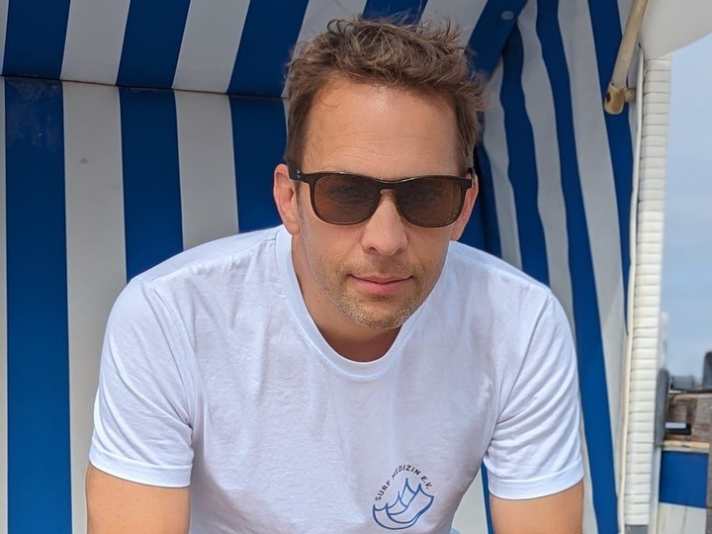
How many of you are there?
We now have over 60 members in Germany, Austria and Switzerland. And of course we are trying to continue to grow and expand our network with new members.
Anyone who would like to take part and fulfils the above criteria is very welcome!
And you do all this on a voluntary basis?
We do all this unpaid, on a voluntary basis. We cover our costs through membership fees and donations. These are fully tax-deductible and therefore also interesting for companies that like our work and would like to support us.
We noticed that even the world's top riders don't have any medical care."
Do you only cater for competitive athletes or can I also contact you as a hobby surfer?
No, of course anyone can come! But what amazed us is that even the world's top riders have no regular medical care. They are on their own and have to organise everything themselves. That's why we are involved in many events, such as the World Cup on Sylt. But any amateur athlete who goes stand-up paddling or wingsurfing on a quarry pond can get in touch with us. We will be happy to advise you.
We also offer an online service where athletes can contact us 24 hours a day, 7 days a week. We also have our stationary network of doctors and physios who we can recommend and refer to in the event of enquiries.
The biggest problem in the professional sector is overload damage
You also use events like the surf festival to become better known.
Exactly, on the one hand we want to be visible and approachable for the visitors. And on the other hand, of course, to provide medical care on site for the male and female riders taking part in the competitions. Although they have emergency care via the Red Cross or the DLRG, there is no sports medical care. In the case of longer, chronic complaints that last the whole season, there is of course not much the paramedic can do. That's why we usually have a doctor and a physio at major events so that we cover two areas, so to speak. That way, we can provide treatment straight away and also discuss the next medical steps.
What kind of cases do you treat there?
Fortunately, we haven't had any serious injuries in recent years. Most of them were cuts and grazes as well as strains and bruises. The majority were chronic complaints, i.e. overuse injuries that riders carry around with them for months. That is actually the biggest problem in the professional sector.
How many events are you involved in per year?
This year we have 16 events. The last event this year will be the Windsurf World Cup on Sylt, after which the season will be over. You can find all the dates on our website and in the social media!
We also regularly organise workshops for doctors and physios where we pass on our knowledge.
Do you then only treat on site or do you also make longer-term plans for rehabilitation or regeneration?
We treat acute injuries or complaints on site so that the athletes are fit again for the next competition. In the case of chronic complaints, we analyse the cause and start therapy. We then try to place the athlete through our network so that we can offer them a long-term perspective.
We don't just want to "fix" people, we want them to be fit right from the start and not get injured in the first place."
You told us a few months ago about the Winter surfing advise. How important is this prevention and counselling for you?
That is our second pillar. We don't just want to "repair" the athletes, we don't want them to get injured in the first place. And that's why prevention before a possible injury is very important. But that has a lot to do with motivation, and it's difficult for us because we don't see most athletes regularly. That means we can't control or motivate them.
One goal: to create more awareness among brands
But the most important thing is that we get better access to the surf industry so that they support medical care for their riders. It's often difficult when you come up with medical issues. Of course it's a business, but we try to keep the main players who deliver the show fit. But it's difficult to create this awareness among the brands that sponsor the riders and regulate competition life. But as long as medicine, fitness and prevention are not a high priority for the people in charge of the company, not much will change.
At first, it doesn't sound quite understandable if you offer to make the drivers fit or keep them fit and the brands then refuse.
I've already spoken to many people in charge, including at the associations. It's a difficult topic in a fun sport that always wants to present itself as very fit and beautiful. People don't like to talk about injuries, pain and anything else that doesn't fit in. We don't want to emphasise this at all, but can anyone imagine a Bundesliga team without a medical team?
People don't like to talk about injuries and pain."
Red Bull has a large rehabilitation centre for its athletes...
That's where it works. Red Bull sees the "market value" of healthy, fit athletes. They not only sponsor the athletes themselves but also support and pay for their medical treatment. That's how it should be.
How many athletes do you have undergoing long-term treatment?
There are probably 20 to 25 of them with whom we are in regular contact. Most of them are travelling from competition to competition, so contact is online and only when they need something. A longer-term programme or an annual plan currently only works for athletes who are connected via an Olympic training centre.
And how do you divide that up between the sports?
We already have more kitesurfing injuries. Simply because you can ride in very shallow water and accidents also happen on the beach, which is almost unheard of in other board sports. They also have a slightly different mentality to windsurfers and are more willing to take risks.
Do you see any areas where a lot of education is particularly necessary?
Warming up is such a topic. Even among the pros, hardly anyone is interested, I'm afraid to say. There are a few who stretch a bit, but nobody really warms up - probably because it's just boring. I'd rather get on the water quickly before I waste another 10 minutes doing any exercises. But if the water is a long way away, wearing the equipment is certainly a small way of warming up. It would also be good for everyone to do a balancing sport alongside windsurfing to build up a basic level of fitness.
And the second thing we recommend is to get a second medical opinion in the event of complaints before injuries are delayed. Anyone can contact us, it's all voluntary and free of charge. Nobody has to show an insurance card to us, as we are an independent organisation.
What about minor injuries such as cuts or abrasions? When can you continue surfing, when should you stop?
For superficial wounds that are not bleeding heavily, you can wait until the end of the surf session. Then rinse with clean water, disinfect if possible and cover with a plaster for protection. Check the wound again the next day: if the pain, redness and swelling increase, you should see a doctor!
If not: disinfect again and cover with a plaster. As most people are not put off windsurfing by a small wound: Cover the wound with the plaster with Leukoplast. Then check the wound again in the evening. But: Early professional wound treatment saves many complications!
- Info and contact: surfmedicine.org
Lars Bubelach: "This really is incredible support!"
Up-and-coming surfer Lars Bubelach is fighting his way back from a serious knee injury - thanks in part to the surf doctors, he is hopeful that he will be back on the board next year.
How did you hear about the Surfmedizin e.V. association?
Philip Richter, who is also a windsurfer and doctor, gave me the tip to do my rehab in Neumünster. And then the head physio Björn, one of the club's chairmen, came to me and said you're in good hands again. He then told me about the surf medicine forum, which I hadn't known about before. That's a real stroke of luck for me now, they're doing a really good job.
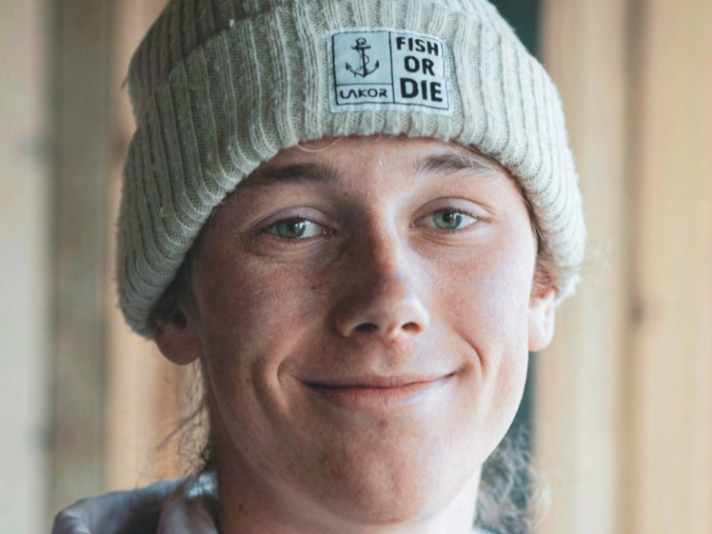
What does your collaboration look like?
Björn and I discussed my goal with my physiotherapist: to be able to surf competitions again. Everyone in the shop now knows where I want to go. As a result, my plan was adapted exactly to this, because it's important that my knees can absorb jumps again. This involves muscle building, mobility exercises and so on. They know that I want to get back into windsurfing and the trainers are fully supportive!
Does that mean you would have done a different rehab programme without the support of the surf doctors?
In any case. Otherwise you would focus on everyday life, which is not a bad thing, of course, but we just do a few extra things. Other physiotherapists might advise you not to go windsurfing again after such a serious injury. But they say we'll get you there properly, we'll feel our way round, we'll do tests to see whether I'm ready or not. It will take some time for me, but we have a common goal!
What exercises have been added for you?
I have to do general strength training first. I was told that if I slowly build up my muscles now, then we can go a bit further in the direction that is important for me. That will be more squats to train my suspension. I also do balance exercises on balance boards, which is also good for windsurfing. Others might do more stair climbing or something like that to get back into everyday life.
Other doctors would say "Don't do it, go play tennis instead!"
Will you stay in touch in the long term?
We actually have a pretty good dialogue all the time. Björn asks how things are going and offers me more exercises, and I can come to Thomas for examinations and check-ups. He can also always organise an X-ray appointment for me as quickly as possible. That really is incredible support. I'm very happy that something like this even exists. I find that most doctors don't really understand what the goal of a windsurfer and water sports enthusiast is. Most of them simply can't imagine living without water sports. This forum and the people in the club understand exactly that one of the top goals is to get back on the water. Other doctors would say "don't do it, go play tennis instead!"
